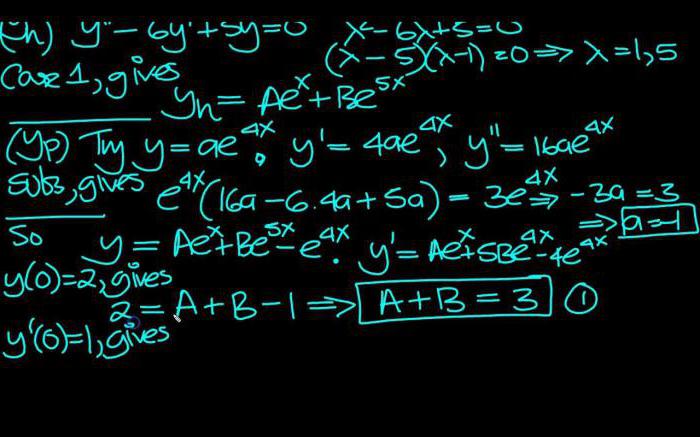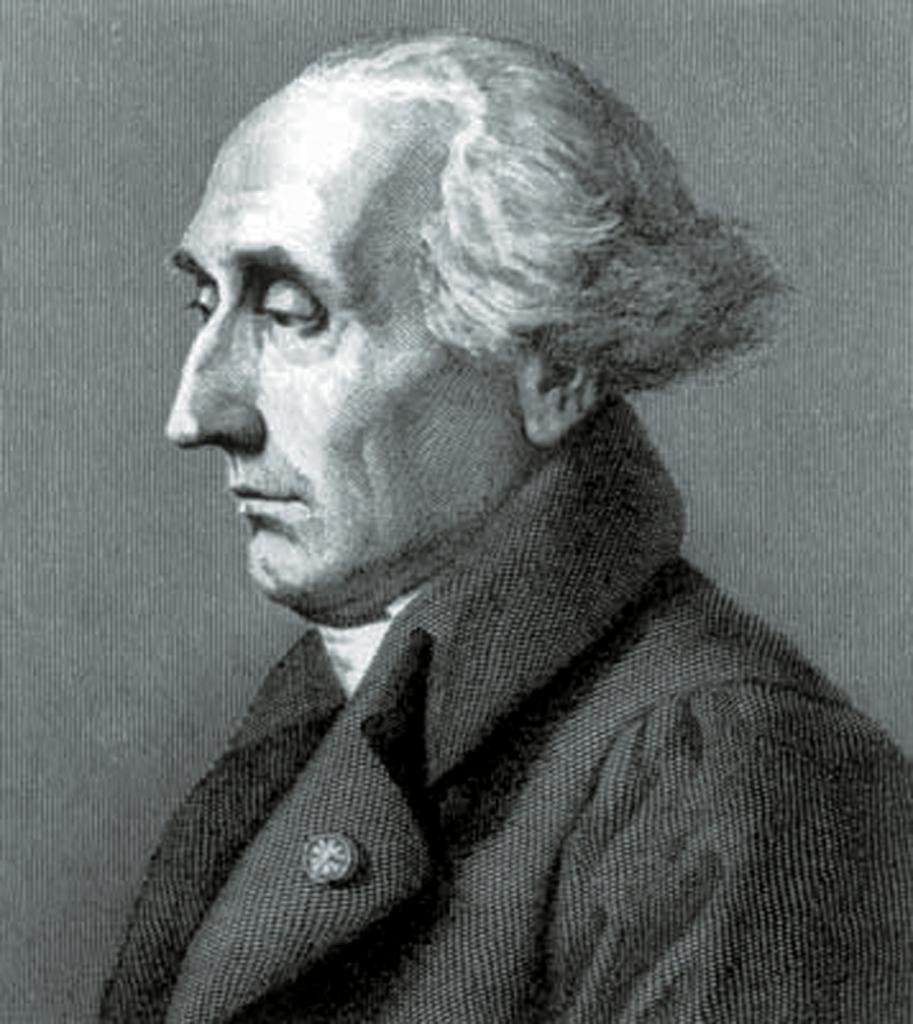I think we should start with such a glorious story.mathematical tool as differential equations. Like all differential and integral calculus, these equations were invented by Newton at the end of the 17th century. He considered precisely this discovery so important that he even encrypted the message, which today can be translated like this: "All laws of nature are described by differential equations." This may seem an exaggeration, but it is. Any law of physics, chemistry, biology can be described by these equations.

A great contribution to the development and creation of the theory of differential equations was made by mathematicians Euler and Lagrange. Already in the 18th century, they discovered and developed what they are now studying at university undergraduates.
A new milestone in the study of differential equationsstarted thanks to Henri Poincare. He created a “qualitative theory of differential equations,” which, in combination with the theory of functions of a complex variable, made a significant contribution to the foundation of topology — the science of space and its properties.

What are differential equations?
Many are afraid of one phrase."differential equation". However, in this article we will explain in detail the whole essence of this very useful mathematical apparatus, which is actually not as complicated as it seems from the title. In order to begin to talk about first order differential equations, one must first become familiar with the basic concepts that are inherently associated with this definition. And we start with the differential.

Differential
Many people know this concept since high school.But still dwell on it in more detail. Imagine a graph of the function. We can increase it to such an extent that any of its segments will take the form of a straight line. On it we take two points that are infinitely close to each other. The difference of their coordinates (x or y) will be an infinitely small value. It is called the differential and is denoted by the signs dy (differential from y) and dx (differential from x). It is very important to understand that the differential is not a finite quantity, and this is its meaning and main function.
And now it is necessary to consider the following element, which is useful to us in explaining the concept of a differential equation. This is a derivative.
Derivative
All of us have probably heard in school and this concept.It is said that the derivative is the rate of growth or decrease of the function. However, from this definition much becomes incomprehensible. Let's try to explain the derivative through differentials. Let's go back to an infinitely small segment of a function with two points that are at a minimum distance from each other. But even for this distance, the function has time to change by some amount. And to describe this change, and came up with a derivative, which otherwise can be written as the ratio of the differentials: f (x) "= df / dx.
Now it is worth considering the basic properties of the derivative. There are only three of them:
- The derivative of the sum or difference can be represented as the sum or difference of the derivatives: (a + b) "= a" + b "and (a-b)" = a "-b".
- The second property is associated with multiplication. The derivative of a work is the sum of the products of one function by the derivative of another: (a * b) "= a" * b + a * b ".
- The derivative of the difference can be written as the following equation: (a / b) "= (a" * b-a * b ") / b2.
All these properties will be useful to us for finding solutions of differential equations of the first order.
There are also partial derivatives.Suppose we have a function z, which depends on the variables x and y. To calculate the partial derivative of this function, say, for x, we need to take the variable y as a constant and just differentiate.
Integral
Another important concept is the integral.In fact, it is the exact opposite of the derivative. Integrals are of several types, but to solve the simplest differential equations we need the most trivial indefinite integrals.
So what is the integral?Suppose we have some dependence of f on x. We take the integral from it and get the function F (x) (often called primitive), the derivative of which is equal to the original function. Thus, F (x) "= f (x). It also follows that the integral of the derivative is equal to the original function.
When solving differential equations, it is very important to understand the meaning and function of the integral, since it is very often necessary to take them to find a solution.
Equations vary depending on their nature. In the next section, we will look at the types of first order differential equations, and then learn how to solve them.
Classes of differential equations
"Diffury" are divided in order of derivatives,participating in them. Thus, the first, second, third and more order. They can also be divided into several classes: ordinary and in partial derivatives.
In this article we will look at ordinaryfirst order differential equations. We will also discuss examples and methods for solving them in the following sections. We will consider only ODE, because these are the most common types of equations. Ordinary divided into subspecies: with separable variables, homogeneous and heterogeneous. Next, you will learn how they differ from each other, and learn how to solve them.
In addition, these equations can be combined so that after we have a system of first-order differential equations. We will also consider such systems and learn how to solve.
Why do we consider only the first order? Because you need to start with a simple, and to describe everything related to differential equations, in one article is simply impossible.

Equations with separable variables
This is perhaps the simplest differentialfirst order equations. These include examples that can be written like this: y "= f (x) * f (y). To solve this equation, we need a formula for representing the derivative as the ratio of differentials: y" = dy / dx. Using it, we obtain the following equation: dy / dx = f (x) * f (y). Now we can refer to the method of solving standard examples: we divide the variables in parts, that is, we move everything from the variable y to the part where dy is located, and also do it with the variable x. We obtain an equation of the form: dy / f (y) = f (x) dx, which is solved by taking integrals from both sides. Do not forget about the constant that must be set after taking the integral.
The solution of any "diffura" is a function of x depending on y (in our case) or, if there is a numerical condition, the answer is in the form of a number. Let us analyze the whole course of the decision with a concrete example:
y "= 2y * sin (x)
We transfer variables in different directions:
dy / y = 2 * sin (x) dx
Now we take integrals. All of them can be found in a special integral table. And we get:
ln (y) = -2 * cos (x) + C
If required, we can express "ypeck" asfunction from "x". Now we can say that our differential equation is solved if no condition is given. A condition may be specified, for example, y (n / 2) = e. Then we simply substitute the value of these variables in the solution and find the value of the constant. In our example, it is 1.
Homogeneous differential equations of first order
Now go to the more difficult part.Homogeneous differential equations of the first order can be written in the general form as follows: y "= z (x, y). It should be noted that the right function of two variables is homogeneous and cannot be divided into two dependencies: z on x and z on y. Check whether the equation is homogeneous or not is quite simple: we make the replacement x = k * x and y = k * y. Now we reduce all k.If all these letters have been reduced, then the equation is homogeneous and you can safely proceed to its solution. let's say: the principle of solving these examples is also very simple.
Нам нужно сделать замену:y = t (x) * x, where t is a function, which also depends on x. Then we can express the derivative: y "= t" (x) * x + t. Substituting all this into our original equation and simplifying it, we get an example with separable variables t and x. We solve it and obtain the dependence t (x). When we received it, we simply substitute y = t (x) * x in our previous replacement. Then we get the dependence of y on x.
To make it clearer, let's look at an example: x * y "= y-x * ey / x.
При проверке с заменой всё сокращается.So, the equation is really homogeneous. Now we make another substitution, which we talked about: y = t (x) * x and y "= t" (x) * x + t (x). After simplification, we obtain the following equation: t "(x) * x = -et. We solve the resulting example with separated variables and get: e-t= ln (C * x). It remains for us to replace t with y / x (because if y = t * x, then t = y / x), and we get the answer: e-y / x= ln (x * s).

First order linear differential equations
It is time to consider another extensive topic.We will analyze non-homogeneous differential equations of the first order. How do they differ from the previous two? Let's figure it out. Linear differential equations of the first order in general form can be written with the following equation: y "+ g (x) * y = z (x). It is worth clarifying that z (x) and g (x) can be constant values.
And now an example: y "- y * x = x2.
There are two ways to solve it, and we will sort both in order. The first is the method of variation of arbitrary constants.
In order to solve an equation in this way, you must first equate the right-hand side to zero and solve the resulting equation, which after the transfer of parts will take the form:
y "= y * x;
dy / dx = y * x;
dy / y = xdx;
ln | y | = x2/ 2 + C;
y = ex2 / 2* uFROM= C1* ex2 / 2.
Now we need to replace the constant C1 on the function v (x) that we have to find.
y = v * ex2 / 2.
We will replace the derivative:
y "= v" * ex2 / 2-x * v * ex2 / 2.
And we substitute these expressions into the original equation:
v "* ex2 / 2 - x * v * ex2 / 2 + x * v * ex2 / 2 = x2.
It can be seen that in the left part two terms are shortened. If in some example this did not happen, then you did something wrong. We continue:
v "* ex2 / 2 = x2.
Now we solve the usual equation in which we need to separate the variables:
dv / dx = x2/ ex2 / 2;
dv = x2* e-x2 / 2dx.
To extract the integral, we have to applyhere integration in parts. However, this is not the topic of our article. If you are interested, you can independently learn how to perform such actions. It is not difficult, and with sufficient skill and attentiveness does not take much time.
Let us turn to the second method for solving inhomogeneous equations: the Bernoulli method. Which approach is faster and easier - it's up to you.
So, when solving this equation with usit is necessary to make a replacement: y = k * n. Here k and n are some x-dependent functions. Then the derivative will look like this: y "= k" * n + k * n ". We substitute both substitutions into the equation:
k "* n + k * n" + x * k * n = x2.
Grouping:
k "* n + k * (n" + x * n) = x2.
Now we need to equate to zero what is in brackets. Now, if we combine the two resulting equations, we obtain a system of first-order differential equations that need to be solved:
n "+ x * n = 0;
k "* n = x2.
The first equality is solved as an ordinary equation. To do this, separate the variables:
dn / dx = x * v;
dn / n = xdx.
Take the integral and we get: ln (n) = x2/ 2. Then, if we express n:
n = ex2 / 2.
Now we substitute the resulting equation into the second equation of the system:
k "* ex2 / 2= with2.
And converting, we get the same equality as in the first method:
dk = x2/ ex2 / 2.
We also will not analyze further actions.It is worth saying that at first the solution of first order differential equations causes significant difficulties. However, with a deeper immersion into the topic, it starts getting better and better.
Where are differential equations used?
Very active differential equationsapplied in physics, since almost all the basic laws are written in differential form, and the formulas we see are solutions of these equations. In chemistry, they are used for the same reason: the basic laws are derived with their help. In biology, differential equations are used to model the behavior of systems, for example, predator - prey. They can also be used to create breeding patterns for, say, a colony of microorganisms.
How do differential equations help in life?
The answer to this question is simple: no way.If you are not a scientist or an engineer, then they are unlikely to be useful to you. However, for general development, it does not hurt to know what a differential equation is and how it is solved. And then the question of a son or daughter is "what is a differential equation?" Don't stump you. Well, if you are a scientist or an engineer, then you yourself understand the importance of this topic in any science. But the most important thing is that now the question "how to solve a first-order differential equation?" you can always give an answer. Agree, it is always nice when you understand what people are even afraid to understand.

The main problems in the study
The main problem in understanding this topic ispoor skill of integration and differentiation of functions. If you take the derivatives and integrals poorly, then you probably should learn more, master the different methods of integration and differentiation, and only then begin to study the material that was described in the article.
Some people are surprised when they find out that dxcan be transferred, because earlier (at school) it was stated that the fraction dy / dx is indivisible. Here you need to read the literature on the derivative and understand that it is the ratio of infinitely small quantities that can be manipulated when solving equations.
Many do not immediately realize that the solution of differential equations of the first order is often a function or a non-contracted integral, and this error gives them a lot of trouble.
What else can you learn to better understand?
It is best to start further immersion in the world.differential calculus with specialized textbooks, for example, on mathematical analysis for students of non-mathematical specialties. Then you can go to a more specialized literature.
It is worth saying that, apart from differential equations, there are also integral equations, so you will always have something to strive for and to study.

Conclusion
We hope that after reading this article, you have an idea of what differential equations are and how to solve them correctly.
In any case, mathematics is somehow useful to us in life. She develops logic and attention, without which every person is like without hands.












